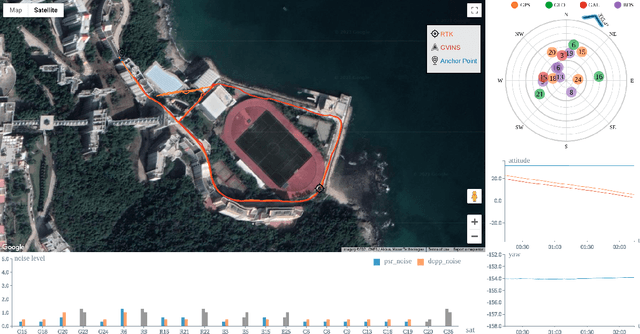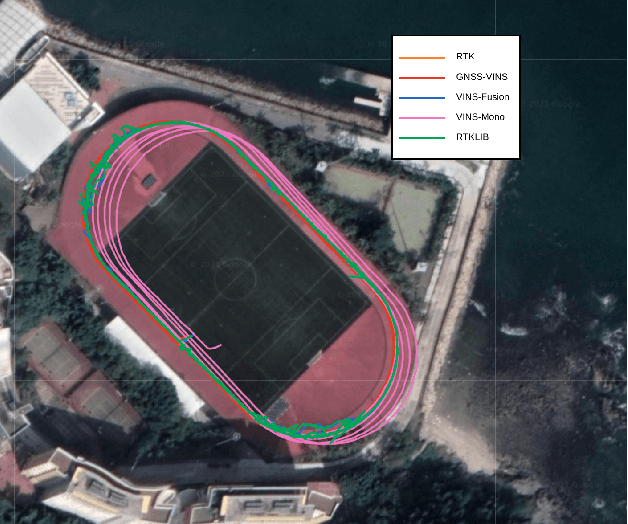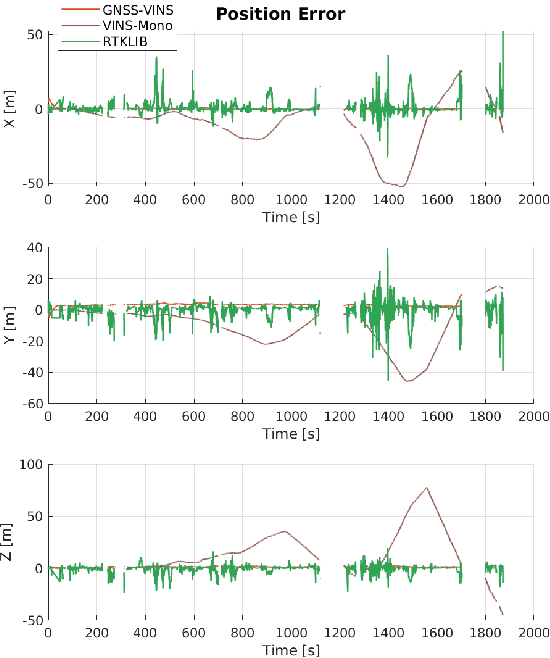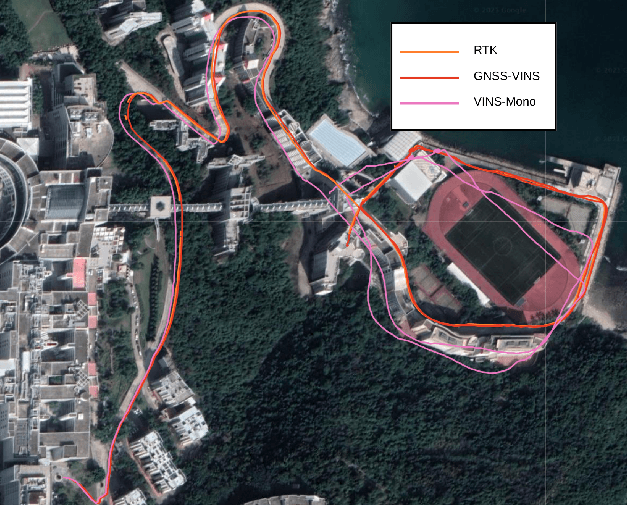GVINS: Tightly Coupled GNSS-Visual-Inertial Fusion for Smooth and Consistent State Estimation
Paper and Code
Apr 01, 2021



Visual-Inertial odometry (VIO) is known to suffer from drifting especially over long-term runs. In this paper, we present GVINS, a non-linear optimization based system that tightly fuses GNSS raw measurements with visual and inertial information for real-time and drift-free state estimation. Our system is aiming to provide accurate global 6-DoF estimation under complex indoor-outdoor environment where GNSS signals may be largely intercepted or even totally unavailable. To connect global measurements with local states, a coarse-to-fine initialization procedure is proposed to efficiently online calibrate the transformation and initialize GNSS states from only a short window of measurements. The GNSS pseudorange and Doppler shift measurements are then modelled and optimized under a factor graph framework along with visual and inertial constraints. For complex and GNSS-unfriendly areas, the degenerate cases are discussed and carefully handled to ensure robustness. The engineering challenges involved in the system are also included to facilitate relevant GNSS fusion researches. Thanks to the tightly-coupled multi-sensor approach and system design, our system fully exploits the merits of three types of sensors and is capable to seamlessly cope with the transition between indoor and outdoor environments, where satellites are lost and recaptured again. We extensively evaluate the proposed system by both simulation and real-world experiments, and the result demonstrates that our system substantially eliminates the drift of VIO and preserves the local accuracy in spite of noisy GNSS measurements. In addition, experiments also show that our system can gain from even a single satellite while conventional GNSS algorithms need four at lease.
 Add to Chrome
Add to Chrome Add to Firefox
Add to Firefox Add to Edge
Add to Edge